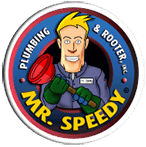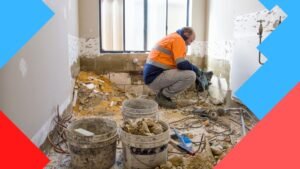Know Your Home Plumbing
So you’re not a plumber. Whenever you have a home plumbing problem, you call a professional plumber and pay him to resolve your plumbing issue.
Whether your own your home or you are a renter, there are a few basic things you should know about the plumbing system in your home. Knowing about these things will help you deal better with your plumber. And you may also be able to save yourself some money by fixing some simple things yourself – if you have the tools and know what you’re doing.
Here are ten basic things every homeowner or renter should know about their plumbing systems.
Know How to Shut Off The Water Source.
It is very important to know where the water source is located on your property and how to shut it off in the event of an emergency. Most commonly, the water shut-off valve is located near the water meter. If your home has a well, the shut-off valve is usually situated at the spot where the water from the well enters the house. There may be two separate shut-off valves – one at the meter and the other at the house. It is very important that you and every member of your household knows where the shut-off valves are and how to turn them off in case of an emergency – say, a flooding, or in the event of an earthquake.
Learn How to Read Your Water Meter and Your Water Bill.
Most people look at their water bill, but very few know how to examine a water bill to locate problems. Even fewer people know how to read their water meter. Check your monthly water bill and make sure the water company is billing you correctly for the actual amount of water you are using. If you find your bill going up steadily, but haven’t had new house guests or don’t seem to be using more water than usual, you may have a water leak.
Here’s an easy way to test this: look at your water meter before you go to sleep, when all the members of your household are in bed and won’t be using any water for a while. Then check it again next morning. If the meter has gone up, you have a water leak. Ask a technician from your water company to give you some help learning how to read your water bill and your water meter.
Check Your Water Pressure.
The correct water pressure is very important. Normal water pressure in a residential setting is usually around 80 lbs per square inch (80psi). The leading cause of water leaks is water pressure that is too high. Buy a gauge from your local hardware store to test your water pressure: these gauges are cheap – usually about $10. You can also ask your water company to tell you what your water pressure is.
Know Your Waste System and Location of Clean-Outs.
It is very important that you are familiar with the type of waste system you have in your home. Is there a septic tank, or are you hooked up to the municipal sewerage system? You should also be familiar with the location of all your clean-out plugs. Many older homes do not have built-in clean-out plugs, and you may have to install one of you need to clear a stoppage in your main sewer line.
Check Your Air Conditioning Condensation Lines.
All air conditioning systems inevitably produce water due to condensation when the air conditioning system is in use. This condensation must have somewhere to drain. If your condensation lines are blocked or are otherwise faulty, they will not drain correctly, and this can lead to serious problems including water damage, mold, or other problems. It is very important that you know where these condensation lines are and that you check them regularly.
Gas Shut Off Valves.
If your home’s appliances are powered by gas – whether natural gas or by propane – you must know where the gas shut-off valves are located and how to shut them off. You need to know where to shut off the gas at the supply and also at the location of each appliance if appropriate. In the event of an earthquake, immediately shutoff the gas – before you go online to Twitter to find out if anyone else felt the earthquake.
Water Heater Supply Shut-Off.
Your water heater has its own shut-off valve. You must know where this is located and how to shut it off in the event of a problem. If you have a water heater problem or a hot water leak, you can be left without hot water. It is important to place a pan under the water heater to collect any water that might spill or run off.
Water heaters are made of metal. Water rusts metal. So it inevitable that your water heater will eventually rust, begin to leak, and will need to be replaced. Placing a pan under your water heater often prevents expensive water damage when water begins to leak from the tank. If your temperature valve or your pressure relief valve is defective, this can cause serious damage. But fortunately they can be replaced and you may not need to replace the entire water heater.
Locate The Shut-Off Valve (Angle Stop) For every Fixture.
Take a look behind your toilet or sink: every plumbing fixture has a shut-off valve – also known as an “angle stop”. You must know where these shut-off valves are located and how to turn them off in an emergency until the plumber arrives. And don’t use these shut-off valves unless you are in fact experiencing an emergency: these shut-off valves are not designed for daily use. Know how to shut off the water to each individual appliance. Some plumbing fixtures – such as your shower – generally are not fitted with a shut-off valve. If you need to shut one of these off, you will need to shut off the main water supply to your home (see above).



